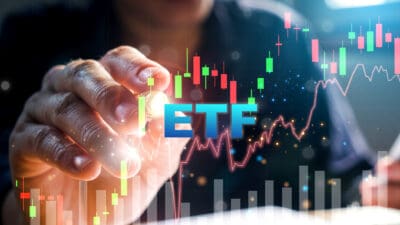Exchange-traded funds (ETFs) have exploded in popularity over the past few years – and for good reason.
With a single trade, you can access a diversified basket of shares from sectors, industries, themes, or even countries. But with hundreds of ASX ETFs now trading on the local market, the real challenge for investors isn't how to buy one – it is how to choose the right one.
So, if you're feeling a bit overwhelmed, here's a quick and easy guide to help narrow things down.
Start with your goals
Before diving into the world of ASX ETFs, it is worth asking a simple question: What do I want this ETF to do for me? Are you looking for long-term growth, steady income, global diversification, or exposure to a specific are like technology or healthcare?
For example, if you're chasing steady dividends from established companies, the Vanguard Australian Shares High Yield ETF (ASX: VHY) could be a strong candidate. It focuses on high-yielding ASX dividend shares and pays out income quarterly.
On the other hand, if you're looking for long-term capital growth and want exposure to some of the world's most powerful companies – think Apple, Tesla, Microsoft and Nvidia – then something like the Betashares Nasdaq 100 ETF (ASX: NDQ) or the iShares S&P 500 ETF (ASX: IVV) might be more suitable.
Understand what's inside the ETF
Not all ASX ETFs are built the same. Some track broad market indices like the Vanguard Australian Shares Index ETF (ASX: VAS), which gives you a slice of the top 300 Aussie companies. Others are far more focused – like the Betashares Global Cybersecurity ETF (ASX: HACK), which gives you targeted exposure to companies involved in cybersecurity.
Knowing what the ETF holds helps avoid overlap, manage risk, and ensures you're investing in line with your goals.
Check the fees
While ETFs are generally low-cost, fees still matter. Most passive index-tracking ETFs will have low management fees, often below 0.20% per annum. But thematic or actively managed ETFs may charge more – sometimes north of 0.50%.
Lower fees help keep more of your returns in your pocket, especially over the long haul.
Think about risk
Every ASX ETF comes with some level of risk. Broad market ASX ETFs like the Vanguard Australian Shares Index ETF or iShares S&P 500 ETF tend to be more stable than niche thematic ETFs that follow fast-growing but volatile sectors.
If you're just starting out or want a core investment to build around, broad-based ETFs are a solid foundation. More speculative ASX ETFs can add some sizzle, but they probably shouldn't make up the bulk of your portfolio.
Keep it simple
One of the biggest mistakes new investors make is overcomplicating things. A solid ETF portfolio doesn't need 15 different holdings. In fact, a mix of just a few well-chosen funds can give you exposure to thousands of companies around the world.
You might want to consider pairing up Vanguard Australian Shares Index ETF with the Betashares Nasdaq 100 ETF or the Vanguard MSCI Index International Shares ETF (ASX: VGS). The latter includes thousands of global shares. Doing so gives you a great blend of local and international exposure, with a nice mix of income and growth potential.
Foolish takeaway
There's no one-size-fits-all answer to the best ASX ETFs to buy. The right choice will always come down to your personal goals, risk tolerance, and time horizon. But by keeping things simple, understanding what you're buying, and sticking with a consistent plan, you'll give yourself a strong shot at long-term investing success.









